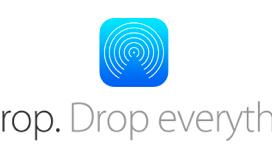applenfc
Latest

Apple is silently telling us to stop asking for near-field communication
We've been hearing rumors about an NFC-enabled iPhone and/or iPad for years now, and the song is always the same: "Sources say the next iDevice will have NFC, and it's about time!" Yet here we sit, with a pair of new iPhones just a day from launch, and no NFC in sight. If there's anything the iPhone 5s and AirDrop should tell us, it's that we should stop expecting an Apple smartphone or tablet with near-field communication, at least for a while. NFC speaks two languages It's important to separate the two primary uses for NFC: Sharing and payments. NFC mobile sharing is useful for everything from virtually handing documents to a coworker, to (apparently) getting naughty videos from your spouse before a business trip. This is an NFC feature that can be used by the widest range of people, and all that is needed is two individuals with compatible devices. NFC payments are quite different -- not in how it works, but in how useful it really is. Finding retailers that accept NFC payments isn't exactly easy. If you don't live in a place like San Francisco or New York City, the ability to use a virtual credit card on your smartphone isn't just a rarity; it's barely even an option. I know this because I live in a midwestern city where people will line up overnight for a new Nexus or Galaxy smartphone, but if you asked a cashier at local store if they accept Google Wallet they'd stare are you like you were from another planet. AirDrop uses Bluetooth and ad-hoc WiFi rather than near-field communication, but it accomplishes the same feat when it comes to mobile sharing. If you have an iPhone 5, 5s, or 5c (or 4th gen iPad, 5th gen iPod, or iPad mini), you can share files with other compatible devices simply by selecting the file and the recipient. It's a no-setup, no-hassle way to send files locally, and you don't need to smash your phones together to make it work. With AirDrop, Apple has duplicated the most useful feature of near-field communication without buckling and including NFC technology in its new devices. Buy why? Apple isn't on board the NFC train, but why? It could be that the technology doesn't seem secure enough to bet on, or that with so few merchants accepting NFC, including it wouldn't actually pay off. In the end, it's almost certainly a mix of many factors, but one angle I don't see mentioned very often is that by adopting near-field communication, Apple might be helping its competitors more than itself. I don't think it's hard to argue that if the new iPhone 5s and 5c included NFC, merchants would have a much greater incentive to invest in the technology. This could benefit Apple, of course, but it would boost long-suffering NFC stalwarts such as Google Wallet (which, ironically, just launched a non-NFC iOS app today) even more. NFC is struggling and growth is slow. By refusing to include it in new devices, Apple is certainly not doing it any favors -- in fact, without an iDevice in its corner, NFC may never break into the mainstream. That's a powerful position for Apple to be in, and one they won't be in a hurry to give up. Will we ever see an NFC-enabled iDevice? It's not entirely out of the question. Apple already has patents on the books that would use near-field communication for sharing, though the systems described work much like AirDrop already does but substitutes Bluetooth for NFC. Regardless, Apple already has everything it needs to wage a long war against near-field communication if it chooses to. With AirDrop handling the local sharing, Passbook acting as a go-between for things such as gift cards and event passes, and a retail scene where NFC is still a non-factor, there's almost no reason to even consider it.
